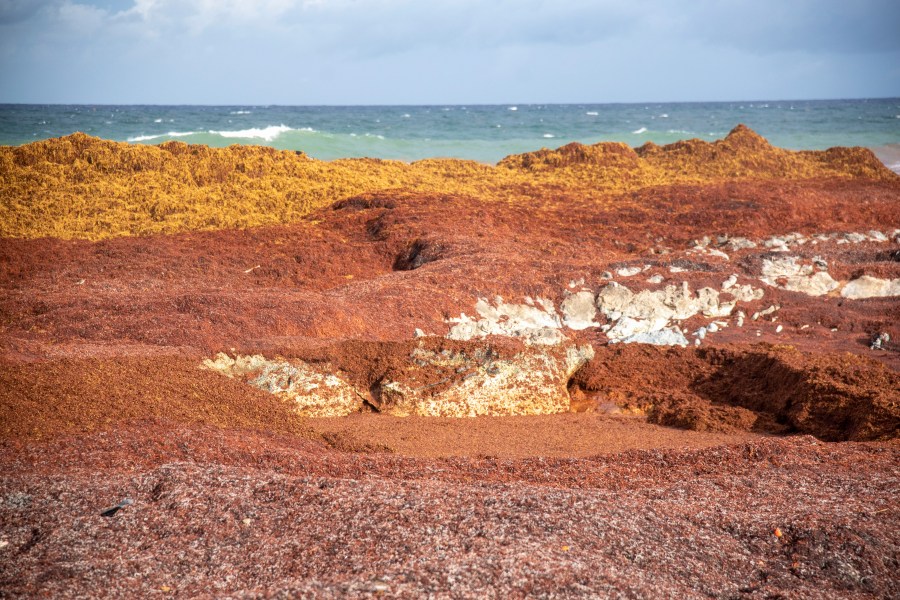Huge sargassum seaweed mass keeps growing: When will it wash up?
(NEXSTAR) – Blobs of seaweed amassing in the Atlantic Ocean grew to a collective 5.5 million tons last month, an increase over the record-breaking quantity reached in December.
The vast majority of this type of seaweed, called sargassum, is still floating out in the central Atlantic Ocean, where it doesn’t pose too many problems. The issues start when the seaweed washes ashore, rots and emits hydrogen sulfide. It smells like rotten eggs and can cause breathing problems for people with sensitivities.
Little creatures that live in the sargassum clumps also pose problems for workers that are tasked with cleaning up beaches. The organisms, like jellyfish larvae, can cause blisters and rashes when they come into contact with people’s skin.
Last week, researchers at the University of South Florida Optical Oceanography Lab said there was “essentially no sargassum” detectable in the Gulf of Mexico or Caribbean Sea. However, they expect that to change in the coming months as the bloom grows and migrates west.
They expect some of the stinky seaweed to start washing up on eastern Caribbean beaches by late February or early March. By April, they predict sargassum will be abundant throughout the Caribbean Sea.
Spring breakers heading to Florida may get lucky this year, the USF team said. The southeastern coast of Florida, including the Keys, should be spared until “at least late April or May.”

USF’s Optical Oceanography Lab is keeping a close eye on the sargassum since it exploded in quantity late last year, quintupling in size in just about 30 days.
“Even though this increase is less robust than the change from November to December, the current Sargassum abundance remains quite high for the month of January – only surpassed by the quantities in January 2018 and January 2023,” the researchers wrote in a report.
The size of these blooms, and the destruction they cause, has really ramped up over the past decade. “Before 2011, we never saw anything like this,” Brian Barnes, a research professor at the University of South Florida who studies sargassum, told Nexstar’s WFLA last year.
Last year, the sargassum mass grew to 13 million tons. Not all of that washed up on beaches, but the clumps that did come ashore wreaked havoc on parts of Florida’s coast, and posed major challenges for the tourism industry over spring break and summer.
If beachgoers do observe sargassum washing up on shore, the Florida Department of Health has recommended they avoid touching or swimming near the seaweed. The department also suggested using gloves if you have to handle sargassum and closing windows if you live near the beach to avoid breathing issues and bad smells.
Copyright 2024 Nexstar Media Inc. All rights reserved. This material may not be published, broadcast, rewritten, or redistributed..













